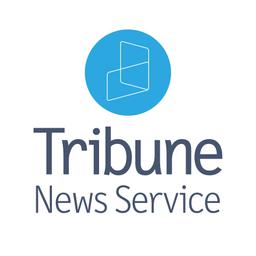If you’re trying to locate a lost 401(k) plan from a previous job, you’re not alone. There were about 29.2 million forgotten 401(k) accounts as of May 2023, according to estimates from Capitalize, a platform that helps people locate and roll over their 401(k)s. Their research showed that the “number of forgotten 401(k)s increased by over 20 percent since May 2021 driven by a period of heightened job switching (‘The Great Resignation’) with 3.8 million and 4.4 million accounts left behind in 2021 and 2022 respectively.”
The value of the lost 401(k) accounts is substantial. These 29.2 million left-behind or forgotten 401(k) accounts are estimated to hold approximately $1.65 trillion in assets, representing 25 percent of all 401(k) plan assets. This is a steep increase from May 2021, when 24.3 million forgotten accounts held $1.35 trillion.
1. New Retirement Lost and Found Database
The new Retirement Savings Lost and Found Database is meant to serve as a centralized location for workers to find lost or forgotten retirement accounts or benefits and get information on how to obtain those funds. You can use this site if you worked for a private sector employer or were a member of a union that sponsored a retirement plan. You must also qualify for retirement benefits from that employer or union.To access the Retirement Savings Lost and Found Database, you must have a valid ID-Proofed Login.gov account. You use this login to access the database and search it using your Social Security number.
What you can find in the database. The website can help you find retirement plans linked to your Social Security number that were sponsored by private-sector employers and unions. This includes defined-benefit pension plans and defined-contribution plans, such as 401(k)s.
Limitations of the New Database
The retirement lost and found is relatively new; it went live on Dec. 27, 2024, and only began voluntary information collection from plan administrators in November. So, the information that is currently available is limited. If you are searching for your plan and don’t find it, I recommend checking back periodically as the database grows in use by plan administrators and as the ESBA uploads information gleaned from Form 8955-SSA.Purpose of the Form 8955-SSA. Form 8955-SSA is an Internal Revenue Service (IRS) form that ERISA retirement plans file to report separated participants who are 65 or older and have a vested account balance in the plan. The IRS provides the information on Form 8955-SSA to the Social Security Administration. It is used to notify applicants for Social Security benefits of possible entitlement to retirement benefits from a prior employer’s retirement plan.
The IRS initially blocked the EBSA from using the information. However, in the weeks before the database went live, the DOL announced the IRS had granted it access to Form 8955-SSA data, reported by Pensions & Investments.
2. Track Down Old 401(k) Statements
The statements could have come in the mail or you may have received them electronically through email. You can also check with former co-workers to see if they have retained statements that would identify your plan.3. Contact Former Employers
It may seem obvious, but one of the easiest ways to track down an old 401(k) plan is to go directly to the source. If you aren’t sure who to contact about finding your missing account, start with the Human Resources or Accounting departments. They should be able to check the plan records to confirm if you participated in a plan.4. Review Past W-2 Tax Forms
Check out your old W-2 tax forms; the forms will list the employer you had a retirement plan with that year. Use the information on your old W-2 to contact your plan sponsor, or old employer, directly to get your account information.5. Search the NAUPA Database
The National Association of Unclaimed Property Administrators (NAUPA) database is searchable by first and last name. This site can easily connect you to the unclaimed property sites for all 50 states. I recommend searching in all of the states where you lived and worked and where you had an official address used for mailing purposes.6. Search Form 5500 Directory
All employers that offer 401(k) plans to their employees are required to submit a completed a Form 5500 every year with the DOL. A quick search on the DOL’s 5500 database may be able to provide you with additional contact information. This tool only dates back to Form 5500 series returns/reports filed since Jan. 1, 2010.7. Search the PBGC Database
The Pension Benefit Guaranty Corporation (PBGC) database is updated quarterly. The PBGC holds unclaimed benefits for people not paid when their retirement plan ended. The PBGC database (https://www.pbgc.gov/wr/find-unclaimed-retirement-benefits) includes missing participants who earned benefits in several types of retirement plans:- Defined benefit pension plans that ended in a standard termination.
- Defined benefit plans that have been trusteed by PBGC.
- Retirement plans that ended and transferred benefits or information to PBGC’s Expanded Missing Participants Program. Plan types in the program are defined benefit plans, defined contribution plans, multiemployer plans and small professional services plans.
8. Find Abandoned Plans
Bankruptcies, mergers, and acquisitions can result in employers abandoning the retirement plans they sponsored for employees. If you had an employer that went through one of those significant events, your missing plan may have been abandoned. A retirement plan is considered an abandoned plan when it is without a responsible sponsor or administrator.When a plan is abandoned, custodians, such as banks, insurers, and mutual fund companies, may be left holding its assets. However, these custodians usually lack the authority to terminate the plans and make benefit distributions, including to meet participant demands. This means that plan participants and beneficiaries have greater difficulty locating and accessing the retirement benefits they have earned.








